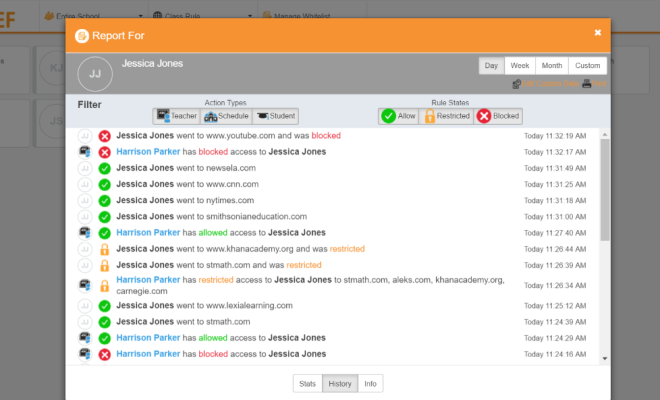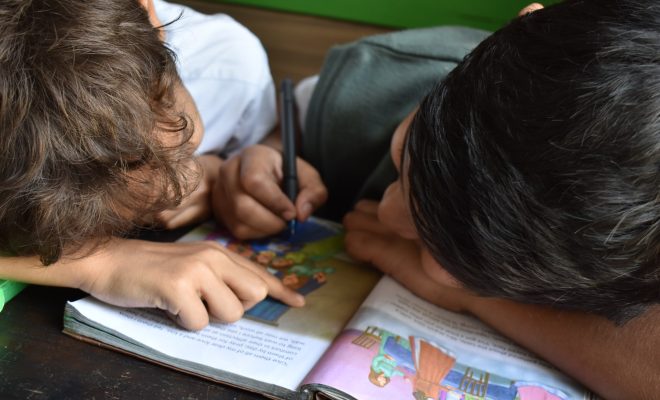A Special Ed Director’s Lessons from the Pandemic
A director of special education shares what COVID-19 taught her about preparing for school shutdowns and improving everyday education.
By Candice Willmore
Like just about everyone else in the country, our district, Warren County Schools, was on spring break when we found out that schools across the state would be closed to prevent the spread of COVID-19. Also just like everyone else, we encountered some challenges as we transitioned to distance learning.
Fortunately, we found unexpected help with some of those challenges, and we learned some important lessons that will be useful if we need to close our buildings again, support individual students at a distance, and even just to strengthen the connection between home and school for our students.
Get The Students Connected
The first lesson we learned was that getting students connected to teachers and each other isn’t so easy! Our high school and some of our middle school grades are a 1:1 computing environment, but we didn’t have a computer for every student in grades K-6. We relied on families to provide their own devices where possible, and our technology department repurposed district devices for students whose families didn’t have their own.
Still, we found that it wasn’t as simple as just getting devices into their hands. Some of our students didn’t have internet access, and distance learning is pretty challenging when you’re relying on paper packets for the families without an internet connection.
To ensure we’re ready for future closures, we’ve used some of the CARES Act grant funds we received to buy Chromebooks and iPads for students to use from home and, critically, access points so those devices can connect to the internet—and the classroom.
Beyond the question of devices and internet access, however, there was still the question of human connection. How would our teachers and students meet and interact?
In part, they relied on old standbys like printed homework packets that were sent home. It’s not very exciting—not even adults want a packet of paperwork—but it was something to keep students progressing.
Teachers also used tools that made sense to them, such as Zoom meetings or private Facebook groups. We even had one teacher who would do science experiments on Facebook Live!
Look for the Hidden Gems You Already Have
I am so proud of the way our teachers leapt into action to create new learning communities, but at the end of the day, there is so much more that happens in these spaces other than a teacher lecturing, reading a story, or demonstrating a science experiment. Learning is a thing students do, not a thing they watch.
We were lucky enough to find a tool in our center rotations that proved to be a real lifesaver for distance learning. We had adopted the Square Panda Literacy System, a multisensory literacy platform, to offer activities within our station rotations that students could work on independently. Square Panda includes a playset and “smart letters” that connect with a tablet to offer students a variety of interactive games focused on letter recognition, letter sounds, and blending, spelling, and pronouncing words.
While it was a student (and staff!) favorite in rotations, it almost seemed purpose-built for the crisis we encountered last spring. Students were already familiar with it and knew they enjoyed the games, so it was something they could work on at home without help from their parents. It is also far more hands-on and interactive than even the most engaging book read by someone else, so it was an engaging change of pace from the groups and meetings and homework packets filling most of students’ days.
It also opened a critical avenue for progress monitoring, which is an essential part of how we support our students with disabilities. It became a lot more challenging online. For example, our teachers would get online monthly with each of their students and maybe time them while they read a passage from the Zoom screen to check on their fluency progress, but it just wasn’t enough.
Square Panda tracks student data and progress itself, so our teachers could see how their students were doing. We just finished our back-to-school assessments where we checked on the level of summer learning losses our students experienced, and those who used Square Panda didn’t see any greater losses than students in the previous year.
When students returned to school this year, Square Panda was the first thing they asked for, making it one of the few things students could count on to be consistent throughout school closures, the summer, and the return to school.
Embrace Technology, Even When a Pandemic Isn’t Forcing You
In the end, it was far from ideal, but we managed the best we could. And we actually learned some things that will help us do a better job in the future. We learned so many new technology skills ourselves, and we learned that our students are actually really comfortable with technology. They knew how to use this stuff and how to learn online before we were confident in our ability to hold up our end!
We also learned that technology can improve that home-to-school connection even when campus is open for in-person learning. The pandemic forced us to hold individualized education program (IEP) meetings online, for example, and that’s a practice we plan to continue. It can be a real challenge at times to schedule a meeting with busy parents, but now we know how easily we can schedule a Zoom meeting during a parent’s lunch break if that’s what works best for them.
A pandemic isn’t the preferred way to learn these or any lessons, but today we’re better prepared for the future, no matter what it has in store.
Candice Willmore is the director of special education at Warren County Schools. She can be reached at [email protected].






